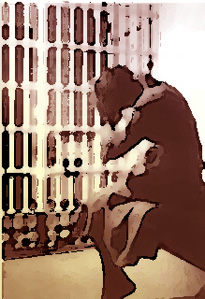Scott Walker: Break Up MPS
The Milwaukee Public Schools system should be replaced with ten to twelve smaller school districts, Republican gubernatorial candidate Scott Walker said Thursday in an “On the Issues” session at Marquette Law School.
Asked by host Mike Gousha, the Law School’s Distinguished Fellow in Law and Public Policy, what he would do about problems facing MPS, Walker said, “I’d legally eliminate it and start all over. . . . Wipe it out, start over again, legally redefine the school district.”
Walker, Milwaukee County Executive since 2002, said his two children attend schools in Wauwatosa and a district of that size or smaller is better managed, can better focus on students, and can benefit from more of a sense of community supporting it. The existing MPS structure is too big, and it is too difficult to make effective improvements, he said.

